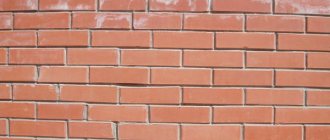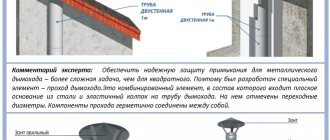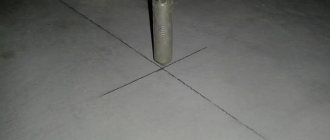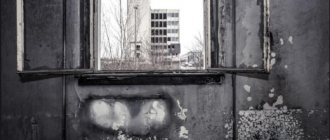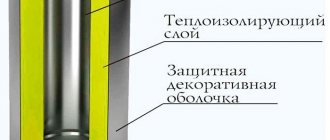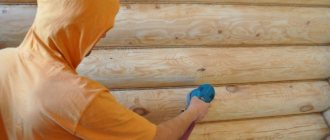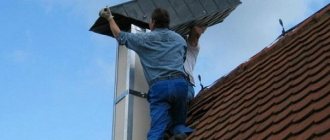Unfortunately, quite often people think about cleaning the chimney when the draft has already disappeared or the reverse appears - the smoke simply goes into the room. But this is already an extreme degree of clogging of the chimney. But even at the beginning of the problem, you are breathing not only smoke, but also dangerous carbon monoxide. And the soot that accumulates on the walls of the chimney can ignite and lead to a fire.
That is why the profession of a chimney sweep has long existed and been revered. However, today a wide variety of special brushes with a long handle or telescopic, round in the form of a brush with a weight on a cable, or more intricate ones are sold for this purpose. All this allows you to cope with cleaning the chimney yourself.
When is it time to clean?
It is impossible to do without cleaning the chimney completely, no matter what material it is made of and no matter what design it is. Over time, due to soot, the passage in the chimneys narrows and the so-called reverse draft effect occurs, when the smoke no longer enters the street, but into the room. If you wait a little longer, any oven will simply become unusable. Not to mention that reverse draft is dangerous to human health.
When cleaning a chimney, you need to consider factors such as:
- Downtime, namely how long there was no cleaning.
- The design of the chimney, how smooth its walls are and what is its service life.
- What kind of fuel was used, and were any plastic bottles or similar debris thrown into the firebox?
- Was wet firewood used?
- Were pine or spruce wood burned among the firewood? from them resinous substances settle on the walls of the chimney.
You can notice that your chimney needs cleaning based on the following signs:
- Change in smoke color. It is ideal if almost transparent, inconspicuous white smoke comes out into the street, but it is bad if it becomes dark - this indicates the presence of a large amount of soot.
- Change in flame color. If the fire is light orange and the wood is crackling, then everything is fine. And if the flame turns a dark orange color, almost orange, this is a sign that it’s time to clean the chimney.
- And finally, the simplest and most logical way is a preventive inspection of the chimney. It's good if a professional technician does this, but even you can notice problems. For example, professional chimney sweeps lower a special weight along the diameter of the chimney into the chimney, and if it passes easily, everything is in order; if it rests, then it will have to be cleaned.
The situation with soot can reach such a critical point when the pollution completely blocks the chimney and ice jams occur. And even worse is coking, when soot accumulates on the bumpers and burns there to large solid fractions similar to coal. Such fractions clog the chimney and block the draft. To remove all this, just a brush with a load will not be enough; you will have to use a special jack to lift the chimney and clean the stove. This is why it is so important to make all sections of the chimney straight. And on rare bends, install tees with a cleaning system.
In total, three methods of chimney cleaning are practiced today: mechanical, using special devices that need to be used to penetrate the pipe; biological, when natural ingredients are used, and chemical, when cleaning is carried out using special preparations. Let's look at each of them in more detail.
Causes and consequences of a dirty chimney
Combustion is a physical and chemical process, as a result of which flammable substances are oxidized and a large amount of heat is released. The fuel breaks up into fractions - part is converted into gas and rushes upward, creating thrust. Particles of unburned materials (plaque and soot) are deposited in the chimney.
The amount of deposits directly depends on the completeness of fuel combustion. With active combustion, the organic content is sharply reduced - water vapor, sulfur dioxide and carbon dioxide come out of the pipe. Heavy resins and ash settle in limited quantities.
Ash deposits mix with wood resins and oils. An “explosive mixture” is formed - when ignited, the temperature of the soot reaches 1000 °C or higher
In addition to the natural processes of combustion and smoldering, the main causes of chimney blockage include:
- The use of wood with a high content of resinous substances, for example, firewood from coniferous trees. The resin forms an excellent adhesive base for soot adhesion.
- Firing a boiler or stove with poorly dried or freshly cut wood - condensation settles on the inner surface of the “smoke chamber”. Soot particles accumulate faster on wet walls.
- Using a heating device for waste disposal. Burning household waste is a complex of ethers, tarry components and non-combustible substances that contribute to the rapid contamination of the smoke channel.
- Unprotected pipe by a cap - deflector. From the street side, leaves can get into the chimney, birds can fly in, etc. While the furnace is idle, wasps or birds sometimes build their nests in the pipeline.
The rapid “overgrowing” of soot is the result of the unscrupulous work of the stove maker. The reduced cross-sectional area of the pipe, incorrect angle of inclination, roughness and many turns of the chimney accelerate the contamination process. Too thin walls or insufficient thermal insulation of the pipe contribute to excess condensation.
A chimney made of asbestos or metal resists decomposition by acids and gases. Brick is less resistant, and combustion products gradually deform the inner walls of the channel. A rough surface accumulates carbon deposits faster
Possible consequences of a polluted channel:
- Reduced cravings. The narrowed lumen limits the free flow of smoke. Due to the accumulation of soot, the pipeline does not warm up well, which means the efficiency of the equipment decreases. It is possible that the draft will overturn - acrid smoke begins to flow from the firebox into the room, which is dangerous for carbon monoxide poisoning.
- Possibility of fire. The soot layer can ignite - in addition to deforming the chimney, sparks and fire pose a threat to the roofing and the house as a whole.
There is a danger of fire and nearby buildings. The roofs of neighboring houses are not immune to the ingress of hot soot particles.
Image gallery
Photo from
Mandatory chimney maintenance measure
Soot build-up in a round chimney
Narrowed lumen of the chimney channel
Soot fire in a chimney
Mechanical chimney cleaning: only in the warm season
As a rule, owners of stoves and fireplaces clean their chimney once, before each heating season, and it’s good if this is enough. The mechanical method is the oldest, but even today it makes sense:
You can clean the chimney manually both from inside the house, from below, and from above, directly from the roof. Each method has its own tool.
If you choose a brush that is used from above, you need to tie a rope to it, hook a weight, and then launch it into the chimney through the roof. It will pass along the entire chimney and take away soot from the walls. It is only important to lower the brush carefully and gradually, slowly, so that the soot is collected efficiently and the load does not damage the chimney itself. In this way, you need to lower and raise the brush several times until it becomes noticeable that the soot has been cleaned and the blockage has been broken through. Typically, one brush is not used for more than three heating seasons.
This method has its disadvantages:
- Firstly, you will need a lot of time for all this, at least an hour;
- Secondly, if you need to clean the chimney, you will not always be able to go out onto the roof, especially when it is snowing or strong winds;
- Finally, with such a device it is quite difficult to clean chimney elbows and hard-to-reach places, or the chimney itself is designed in such a way that it is generally impossible to clean it from the outside.
The method of cleaning the chimney from below, from the room, is much safer for humans. You can easily do all the necessary work and not risk your life. Just take a brush, place it on the flexible holder and insert it from the side of the firebox or through a special inspection hole.
In addition, from below, with the help of long flexible holders, soot is easy to clean even in high bends:
For example, a brush with a telescopic holder is good because you only need to insert one part into another, gradually lowering the brush down or pushing it up and disassemble it in the reverse order:
Here is a step-by-step illustration of what is needed for mechanical cleaning of a chimney with a brush and a weight:
Please note that you need to select a brush according to the diameter of the chimney. It is advisable to be equal to it or 1-2 cm larger, so that the brush can easily catch on and not slide along the walls without reaching them:
Biological cleaning: both in snow and rain
The most famous biological methods are usually called folk. The first method is burning potato peelings. This method allows you to avoid rough mechanical removal of soot from the walls of the chimney and is ideal for areas where the heating season is quite long, since there is no need to stop the furnace firing for a long time. During the combustion of the cleaning, the starch rises through the pipe and is absorbed into the soot. As a result, the structure of the soot changes, it will begin to fall off the walls and fall off.
The second method is dry aspen firewood, which burns so quickly and hotly that it burns all the soot in the chimney. But this method must be used carefully so as not to actually cause a fire.
The third relatively cheap and reliable method to extend the life of a chimney during the heating season is to sprinkle salt on the firewood. With each kindling, the salt binds the soot and does not allow it to settle on the walls of the chimney.
This is what cleaning a chimney with potato peelings looks like:
True, if you want to clean your chimney with raw potato skins, you need to clean at least half a bucket of it.
Why do soot deposits and blockages appear?
At first glance, it seems that after burning wood the smoke disappears without a trace, but this is not at all the case. In addition to gaseous combustion products, smoke contains solid particles, which settle on the walls of the smoke channel, forming a gray or black coating. Water vapor, which is also contained in smoke, binds the soot, and the coating becomes dense and hard. Narrow places, corners of the smoke duct, as well as rough walls of brick pipes are especially susceptible to clogging.
Soot deposits in the pipe
In addition, mechanical blockages are possible: debris accidentally falling into the pipe, tree leaves, bird nests, or bricks falling out of the masonry. Even a small blockage can impair draft, and soot deposited on a foreign object quickly clogs the chimney, making further operation of the stove impossible. There are several ways to clean the chimney from soot and blockages, which are described below.
Dry Cleaning: Caution Required
It happens that soot is difficult to clean, especially if old firewood was used. Then you will have to resort to the chemical method. Its advantage is that it will not take up either your time or your energy.
The choice of special means for cleaning chimneys today is very large: liquids, briquettes, powders. When burned in a furnace, such substances release active gases, which destroy soot. Under their influence, it becomes fragile and begins to fall off. Some of the small particles simply fly out along with the smoke, while the rest fall down and are removed along with the ash.
The powders are simply thrown into the firebox without unpacking, directly with the firewood, and there should be a lot of firewood itself. For effective cleaning, you will need to throw one bag into the fire every two to three weeks. The only caveat of powder products is that it only makes sense to use them if the soot on the chimney walls is no more than 2 mm. But if you use this powder constantly, you won’t need mechanical cleaning of the chimney at all:
If the problem is more serious, you will have to use the so-called log - this is a chemical substance in the form of a briquette, which just needs to be placed in the firebox once every two months, also in packaging. It is used when the wood has already burned out and is set on fire separately. This log contains sawdust, urea, sodium sulfate, coal wax, ammonium sulfate and amorphous silicon.
This composition of active substances is capable of removing accumulated soot in the chimney in just one go. After you burn the chemical log inside the firebox, you will have soot falling off the chimney walls for another two weeks; you just need to remove it. In this case, chemical gases will clean soot not only on the surface of the chimney walls, but also inside the firebox itself and on the heat exchanger. It is this method that allows you to remove soot in the most inaccessible places of bends and knees. And most importantly, such cleaning can be done at any time of the year, even with an active winter furnace. However, if the chimney has not been cleaned for a long time, the blockage is clearly felt and there is almost no draft, you will still have to use a brush first.
Here is a clear example of how to clean a chimney using modern chemicals:
Professional chimney cleaning: fast, reliable, expensive
Strange as it may sound, the profession of chimney sweep still exists all over the world. And the traditional cylinder for a chimney sweep has always been the privilege of only the master. To become one, you need to serve as an apprentice for more than one year, this specialty is so complex.
Some time ago, the craft of a chimney sweep was on the verge of extinction, but relatively recently it has become in sharp demand. It's all about the increased frequency of fires due to poor-quality installation of chimneys and their operation. And since a modern home is quite expensive, it is wiser to hire a specialist to service it than to rely on chance. After all, in the end it will be cheaper to call a professional chimney sweep before the start of the heating season than to call a fire truck in the middle of winter.
For a long time, the All-Russian Voluntary Firefighting Society was involved in chimney cleaning. Today, such services are offered more by private companies. The correct operation of modern chimneys requires periodic inspection, cleaning and prevention. For these purposes, special equipment is used. For example, a vacuum cleaner that sucks soot from the chimney through the firebox. And then you don’t need to drag it across the entire room (and soot is volatile and difficult to wash off furniture).
You can’t do without professional cleaning even in the most advanced cases, when:
- the chimney is covered with a dense layer of hard soot (especially from wet firewood);
- the chimney walls are old and damaged, soot clings tightly to them;
- You don’t have the slightest desire to do such menial work.
In practice it looks like this:
The following devices are also used in professional cleaning of chimneys of private houses:
Modern high-speed installations that completely clean the chimney in just an hour cope with their task quite quickly:
Prices for chimney sweep services and where to find them?
The profession of a chimney sweep is again in demand due to the fact that recently cases of fires in private homes have become more frequent. And they are connected precisely with the contamination of the chimney, as well as with its improper design.
It just seems that everything is easy. In fact, this profession takes several years to be trained. Where can you find such masters? This is where the Internet comes to the rescue. Similar announcements can be found on bulletin boards. You need to search in the services section for your region.
Another way is to contact a furnace equipment service company. Some of them provide similar services.
Prices vary depending on the specific region and the popularity of the specialist. On average, a full range of services will cost 1000 rubles per 1 m2 of cleaned pipe. Vacuum cleaning of ovens will help you get rid of soot and dust.
How to make DIY cleaning devices
Special devices for cleaning chimneys from soot are sold in a regular hardware supermarket or specialty store. However, you can make them yourself.
For example, a plastic brush. Metal, of course, will retain its working shape longer, but with particularly intensive cleaning it can scratch the chimney from the inside. Modern plastic cleaners are soft and scratch the chimney much less, although they do not last long and easily break, losing their working shape. That’s why there is an unspoken rule among summer residents: for a brick chimney, take a metal chimney brush, and for a metal one, use a plastic one.
Plastic brush: short-lived, but gentle on the chimney
Making a plastic brush is as easy as shelling pears. The whole job will take you no more than 15 minutes:
So, a plastic chimney brush is a strong base with a brush through which a metal wire with a weight on a chain is threaded. In addition to all this, you will need a rope along which the brush will be lowered into the chimney.
Brush made from plastic bottles: cheap and cheerful
You can even make a homemade brush from an ordinary plastic bottle (more precisely, several). Just 2-3 of these brushes will be enough for one season.
So let's get started:
- Step 1. Make a round hole in the center of the lid.
- Step 2. Cut the sides of the bottles into strips lengthwise, approximately 1.5 or 2 cm wide.
- Step 3: Now insert one bottle into the other and attach a thick wire to one end.
- Step 4. Spread the cut strips of plastic evenly in a circle and secure the steel cable.
The only difficulty in making this is to make sure that the load and rope (cable) are exactly in the center, and the brush does not warp during use.
Hard round brush: use available materials
Another great option is to make a brush from a disc brush for an angle grinder. This brush is much stronger than previous options and will cope with even the thickest soot. It is only important that the diameter of the brush is equal to the diameter of the chimney, because its bristles are stiff and do not bend well:
To such a brush you need to hang a load weighing about 5 kg on a steel cable, behind which you will pull the brush along the chimney. Just in case, attach another cable to the load, which will help another person from inside the room, if necessary, pull out a stuck brush. It is important that the load is at least a third less than the chimney, otherwise it will get caught.
You need to clean the chimney with such homemade devices as follows:
- Step 1. Climb onto the roof, remove the chimney damper and lower the brush all the way down the chimney.
- Step 2. Now start pulling the brush back.
- Step 3: Lower the brush down again and pull it out again.
- Step 4. All this needs to be done within a few minutes. Keep in mind that there will be a lot of soot falling down inside the room and this must also be removed.
Asymmetrical wire brush: for difficult sections of the chimney
If your chimney does not have a large length, elbows, bends and does not become very clogged (for example, we are talking about a chimney in a seasonal bathhouse), then the following simple devices are suitable for one-time cleaning:
Telescopic brush: for working indoors
Often, tubes that are twisted into each other are used as a holder for a brush. They are called telescopic, otherwise – prefabricated. Working with it is quite simple:
- Step 1. Screw the brush onto the first handle, push it straight through the heating device, push it through and clean the first section of the chimney.
- Step 2. Screw the second one to the end of the handle you are holding and thus push the brush up the chimney.
- Step 4: Repeat this entire process until you have completely cleaned the entire chimney.
See how simple it is in practice:
A telescopic brush can penetrate very deeply into the chimney pipe:
This brush is significantly more expensive than previous options, but the advantage is that they break less often and last quite a long time. In addition, with such a rigid handle it is easier to push through the blockage in the chimney. However, using this method is quite difficult to clear soot from the bends of the chimney.
Let's summarize: no matter what device you use to clean the chimney yourself, the main thing is to do this cleaning regularly.
